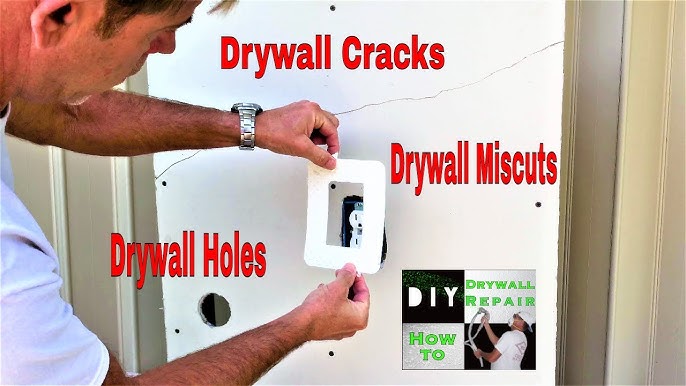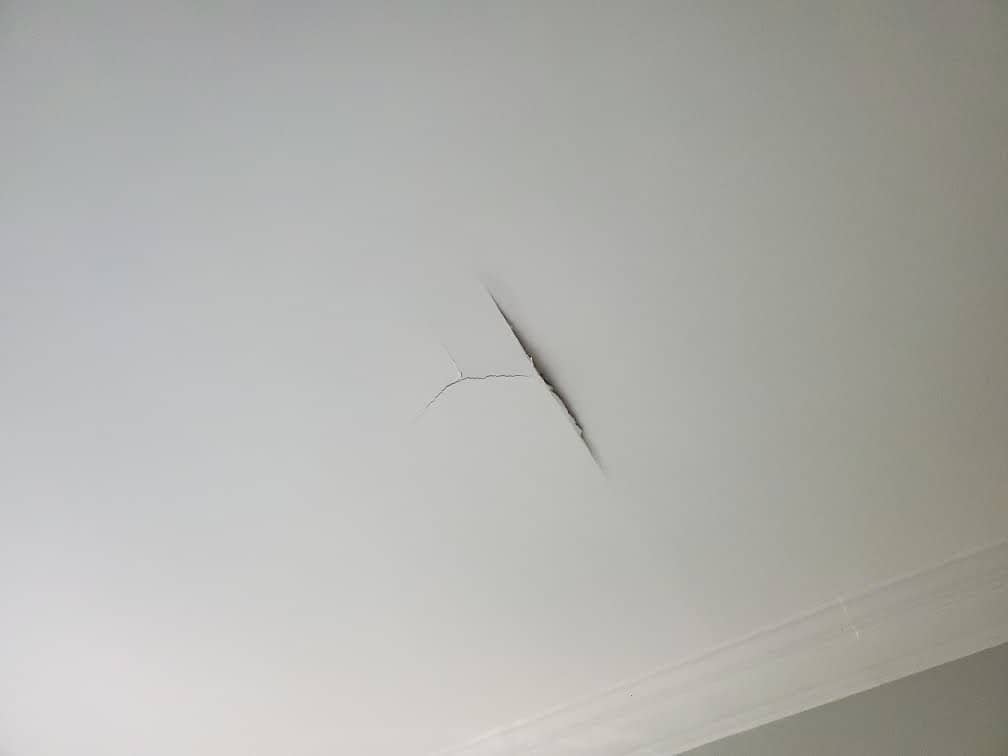Elevate your home’s value with complete Drywall Repair Ogden UT and painting services.
Crucial Tips for Effective Drywall Fixing and Installation Techniques
Efficient drywall repair service and installment requires a cautious approach. Comprehending the kinds of drywall and having the right devices is essential. Exact measurements and appropriate techniques can substantially affect the end result. Numerous overlook important actions like taping and sanding, which can make or break the final appearance. As projects progress, common challenges may arise that call for attention. Checking out these ideas can lead to a much more sleek and effective surface.
Understanding Various Kinds of Drywall
Recognizing the various sorts of drywall is important for any kind of effective repair service or installation project. Drywall, frequently recognized as gypsum board, is available in numerous varieties customized for specific applications. Requirement drywall is the most widely made use of kind, ideal for general interior wall surfaces and ceilings. Moisture-resistant drywall, usually eco-friendly in shade, is developed for locations vulnerable to humidity, such as kitchens and washrooms. Fire-resistant drywall, usually tinted pink or purple, is crafted to endure greater temperatures and is usually utilized in garages or near heating systems. Additionally, soundproof drywall aids minimize noise transmission, making it appropriate for multi-family homes or tape-recording workshops. Specialized drywall, like concrete board, is made use of in wet locations like showers or bathtub borders. Recognizing these types aids in selecting the ideal product for each project, making sure durability and performance out of commission or new setups.
Important Devices for Drywall Repair Service and Installation
Having the right tools is essential for efficient drywall repair work and setup. A high quality utility knife is important for cutting drywall sheets exactly. A drywall T-square assists ensure straight sides, while a taping knife is required for applying joint substance efficiently over seams. In addition, a drywall saw enables removing damaged areas or suitable drywall around components.
For hanging drywall, a power drill with drywall screws is vital, as it enables quick and safe installment. A level is additionally crucial to confirm that the drywall is straight and effectively lined up. A fining sand block or pole sander is important for raveling joint substance once it has actually dried. Ultimately, a gauging tape is essential for precise dimensions, stopping waste and guaranteeing a proper fit. Equipped with these tools, people can deal with drywall jobs properly, bring about professional-looking outcomes.
Step-by-Step Overview to Repairing Holes and Cracks
When dealing with openings and fractures in drywall, having the right tools and materials is crucial for an effective fixing. This overview lays out the needed items and supplies a clear, detailed process to properly restore the surface. Comprehending these aspects will certainly aid ensure a seamless coating and long-lasting outcomes.
Devices and Products Needed
A well-equipped toolkit is important for reliable drywall fixing and installment. Secret tools consist of an energy blade for cutting drywall, a measuring tape to assure accurate sizing, and a drywall saw for bigger holes. A putty blade is essential for applying joint substance efficiently, while a sanding block or pole sander assists accomplish a smooth finish. For patching, a roll of fiberglass mesh tape or paper tape is required to reinforce joints. In addition, a drill and screws are required for securing new drywall pieces. Essential materials contain joint compound, guide, and paint to complete the repair service. Having these tools and materials handy guarantees a smoother, a lot more effective repair service process, producing professional-looking results.
Fixing Refine Steps
Fixing holes and cracks in drywall calls for an organized strategy to ensure a smooth surface. The location surrounding the damages ought to be cleaned up extensively to eliminate dust and particles. Next, for small cracks, a putty blade is made use of to use a joint compound evenly over the location. For bigger holes, a spot is essential; the damaged area is reduced out, and a new piece of drywall is fitted in location, safeguarded with more info screws. As soon as the patch remains in setting, joint compound is put on mix the edges. After drying, fining sand the location smooth is essential. Lastly, the repaired surface area needs to be primed and painted to match the bordering wall, guaranteeing an inconspicuous repair service.
Methods for Putting Up Drywall Panels
Mounting drywall panels calls for cautious planning and precise implementation to guarantee a smooth and professional coating. First, it is important to gauge the wall area precisely and cut the panels to fit, making certain that they straighten with the studs. Placing the panels horizontally is typically suggested, as this can enhance the architectural stability and lower the variety of seams.
Using drywall screws, installers ought to safeguard the panels every 16 inches along the studs, guaranteeing a firm hold. It is crucial to stay clear of overdriving the screws, which can damage the paper surface. For edges and edges, making use of an energy blade permits clean cuts and a tight fit.

Finishing Touches: Taping, Mudding, and Sanding
When the drywall panels are safely in position, the following vital action involves the finishing touches of taping, mudding, and sanding. Taping is crucial for developing a seamless change between panels and hiding joints. A top quality drywall tape, either paper or fiberglass mesh, should be applied over the joints, guaranteeing it adheres effectively to the mud that will certainly be applied following.
Mudding, or applying joint compound, adheres to the taping procedure. This compound fills voids and ravel the surface area. An initial layer must be applied kindly, feathering the sides to blend with the drywall. After the first coat dries, succeeding layers may be required for a flawless finish.
Fining sand is necessary to accomplish a smooth surface area. A fine-grit sandpaper should be used to delicately ravel any kind of flaws. Treatment ought to be taken to prevent over-sanding, which can harm the drywall - drywall contractor. Effectively implemented, these completing touches develop an expert appearance prepared for painting
Tips for Keeping Your Drywall After Installment
Preserving drywall after setup is crucial to protecting its look and architectural integrity. Routine cleansing is required; dirt and dirt can collect, so mild cleaning with a wet fabric is advised. Homeowners should additionally check for any type of signs of dampness or mold and mildew, particularly in high-humidity areas like bathrooms and kitchens. If any type of damages takes place, it's essential to resolve it quickly to stop additional issues.
Using furnishings pads can assist protect against scrapes or dents from hefty products. In addition, painting the drywall with a high-grade, washable paint supplies an extra layer of defense and makes future cleansing easier. Prevent utilizing abrasive cleaners or devices, as these can damage the surface. Finally, keeping a secure indoor climate with proper humidity degrees will certainly aid avoid splitting or buckling over time. By complying with these suggestions, one can assure that drywall continues to be in exceptional problem for many years to come.
Often Asked Questions
How Much Time Does Drywall Take to Totally Dry After Installation?

Can I Install Drywall Over Existing Drywall?
Yes, drywall can be installed over existing drywall, yet it is necessary to assure the underlying surface area is safe and secure and appropriately prepared. This method can boost insulation and reduce installation time, though it might add weight.
What Is the most effective Way to Soundproof Drywall?
The finest method to soundproof drywall involves utilizing specialized soundproofing materials, such as resilient channels, acoustic caulk, and sound-dampening drywall. These methods successfully reduce sound transmission in between rooms, improving general acoustic efficiency in living spaces.
Just how Do I Select the Right Drywall Density?
To choose the appropriate drywall thickness, think about the application and area. Criterion property walls normally use 1/2 inch, while ceilings or specialized areas may need 5/8 inch for additional toughness and soundproofing capabilities.
Exist Eco-Friendly Drywall Options Available?
Yes, environment-friendly drywall options are offered. These consist of products made from recycled products, gypsum boards with reduced unpredictable natural compounds (VOCs), and those making use of sustainable manufacturing procedures, providing environmentally-conscious options for building and improvement projects.
Having the right devices is necessary for efficient drywall repair service and setup. For hanging drywall, a power drill with drywall screws is indispensable, as it enables secure and quick installation. Secret tools consist of an energy blade for reducing drywall, a tape step to guarantee accurate sizing, and a drywall saw for bigger holes. Yes, drywall can be installed over existing drywall, however it is necessary to ensure the underlying surface area is protected and appropriately prepared. The ideal means to soundproof drywall includes using specialized soundproofing materials, such as resilient networks, acoustic caulk, and sound-dampening drywall.